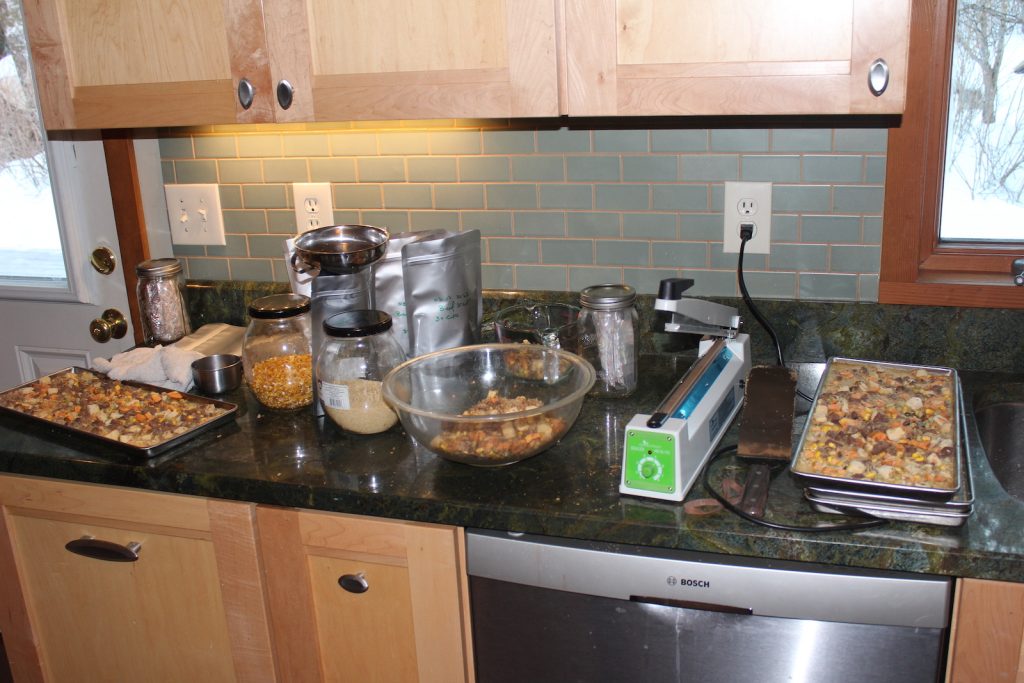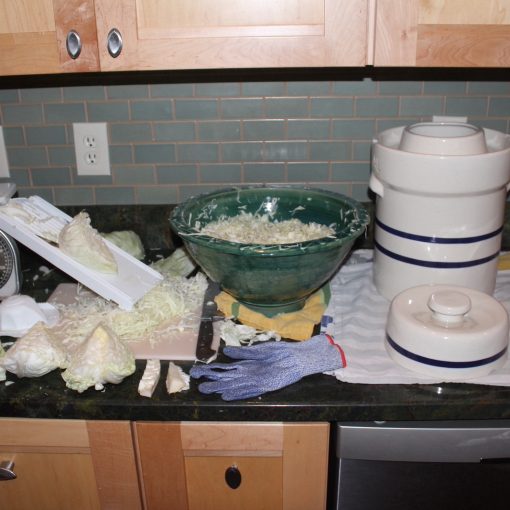Part 4. Best mylar bags (my opinion) and oxygen absorbers (As always, I take no commissions, kick backs, or free stuff for reviews, none.)
The enemies of stored food are heat, light and oxygen. Mylar bags block light. Store jarred food where it’s dark. Generally between 50 and 70 degrees F. works best. Before you seal the lid put in the proper oxygen absorber. More on this below.
There are a lot of crappy bags for sale out there. Some of the largest online retail outlets are the worst culprits. They may cost a bit less. They’re not worth it. Some problems with them:
They’re thin: Maybe 5 mil. That means they’re not as impermeable as thicker bags and won’t keep the food fresh as long as thicker bags.
They have sharp edges instead of rounded edges: This means when you fill a bunch of them and store in a tote, the edges are sharp enough to poke holes in other bags; compromising the food inside.
They don’t have gussets. A gusset on the bottom lets the bag stand on its own while you’re filling it. It sounds like a little thing, but gusset bags are so much easier to fill than bags without a gusset.
Quality and materials may be questionable.
They’re likely made in China. China is a country I avoid buying from because of China’s atrocities against Tibetan Buddhists and Uyghur Muslims. In all cases I try to buy goods manufactured in the USA.

Pack Fresh USA
Made in USA. Great customer service. This is where I get my bags. Because supply chain issues are increasing across the country I bought of whole lot of them.
You want 7 mil ‘premium’ gusseted bags with rounded edges and a zip lock seal. Like these:
https://packfreshusa.com/quart-7-mil-seal-top-premium-gusset-mylar-bags/
They sell larger and smaller sizes but one quart is my go-to size. One quart bags typically hold a little less than 4 cups because you want to leave some head space when you seal them. Considering most cans of soup hold 14 ounces, with a quart bag of freeze dried beef stew, lentil soup, turkey soup, etc. equals about 2 1/3 cans when it’s reconstituted. More than enough for two people, especially if you add a little rice, quinoa, pasta, or bread from the pantry. Two-quart bags hold enough for four or five people, or you can eat half today/half tomorrow.
If all you have are large mylar bags, say two gallon that you bought to store grains, if needed you can cut them to make smaller size bags and heat seal the edges.
*Note again, that with mylar bags you want to leave a little head space for sealing so the quart bags hold more like 3 ½ cups than 4 cups.
To fill: Have everything ready. Bags or jars, oxygen absorbers, impulse sealer, spatula, medium large bowl, pair of scissors, a canning funnel is handy too.
It’s easier to write what kind of food; the date: and amount: on the bags while they’re still flat. Then open them up.
Use the spatula to scoop food from one tray into the bowl. Dump food into bag. Put oxygen absorber(s) in each bag.
Oxygen absorbers:
Oxygen absorbers aren’t the same as silica desiccants like you find in commercial beef jerky bags or electronics boxes.
Air we breathe is about 20 percent oxygen, the rest is nitrogen with a few trace gasses. After you seal a jar or mylar bag, oxygen absorbers suck up what’s left of that 20 percent oxygen remaining in the bag. After the oxygen is used up, the chemical reaction in the absorber stops.
Absorbers come in different sizes: 100 cc, 200 cc, 300 cc, etc. That number indicates volume of oxygen the packet can absorb. Pack Fresh has a table of what size absorber goes with what size container. Here:
Absorbers come shrink wrapped with a pink indicator that turns purple when it’s exposed to oxygen. You want to minimize oxygen exposure to the packets. After you’ve filled the bags with food, snip the end of a packet of absorbers. Take out as many as you’re going to use. Set the impulse sealer to ‘5’ then reseal the packet with the absorbers you’re not going to use, stuff those in a mason jar, close the lid. Drop the absorbers you’re going to use in each bag. Press out excess air. Close the zip lock. Set the impulse sealer to 7 ½ and heat seal. Repeat with each bag.
Work quickly, the color indicator for your left over absorbers, the ones you heat resealed for future, will have turned purple but they’ll go back to pink as long as they’re not exposed more than a couple minutes. They should still be viable. The way to check is to rub them between your fingers. As long as they’re pliable and feel like sand, they’re okay. If they’re hard like a piece of chocolate, toss them.
You don’t reuse the ones you used to store food.
Note on Food Saver vacuum sealer attachment for mason jars: Some people use them along with an oxygen absorber. I don’t. I’ve only used mason jars for food storage to see how the food did. In those cases, the absorber sucked the lid down tight as it removed oxygen. Vacuum sealing in addition to the absorbers shouldn’t hurt anything.




